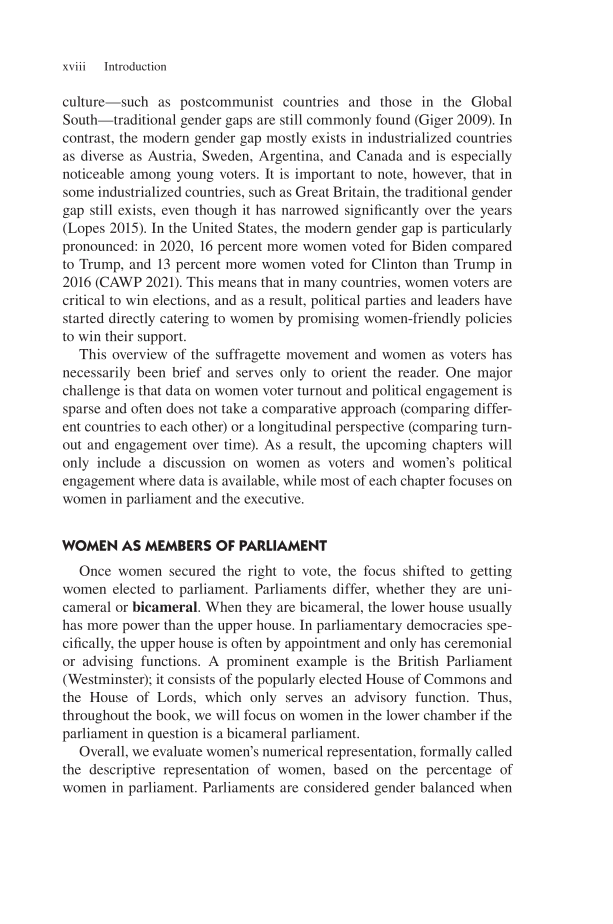xviii Introduction culture—such as postcommunist countries and those in the Global South—traditional gender gaps are still commonly found (Giger 2009). In contrast, the modern gender gap mostly exists in industrialized countries as diverse as Austria, Sweden, Argentina, and Canada and is especially noticeable among young voters. It is important to note, however, that in some industrialized countries, such as Great Britain, the traditional gender gap still exists, even though it has narrowed significantly over the years (Lopes 2015). In the United States, the modern gender gap is particularly pronounced: in 2020, 16 percent more women voted for Biden compared to Trump, and 13 percent more women voted for Clinton than Trump in 2016 (CAWP 2021). This means that in many countries, women voters are critical to win elections, and as a result, political parties and leaders have started directly catering to women by promising women-friendly policies to win their support. This overview of the suffragette movement and women as voters has necessarily been brief and serves only to orient the reader. One major challenge is that data on women voter turnout and political engagement is sparse and often does not take a comparative approach (comparing differ- ent countries to each other) or a longitudinal perspective (comparing turn- out and engagement over time). As a result, the upcoming chapters will only include a discussion on women as voters and women’s political engagement where data is available, while most of each chapter focuses on women in parliament and the executive. WOMEN AS MEMBERS OF PARLIAMENT Once women secured the right to vote, the focus shifted to getting women elected to parliament. Parliaments differ, whether they are uni- cameral or bicameral. When they are bicameral, the lower house usually has more power than the upper house. In parliamentary democracies spe- cifically, the upper house is often by appointment and only has ceremonial or advising functions. A prominent example is the British Parliament (Westminster) it consists of the popularly elected House of Commons and the House of Lords, which only serves an advisory function. Thus, throughout the book, we will focus on women in the lower chamber if the parliament in question is a bicameral parliament. Overall, we evaluate women’s numerical representation, formally called the descriptive representation of women, based on the percentage of women in parliament. Parliaments are considered gender balanced when
Document Details My Account Print multiple pages
Print
You have printed 0 times in the last 24 hours.
Your print count will reset on at .
You may print 0 more time(s) before then.
You may print a maximum of 0 pages at a time.





































































































































































































































































































































